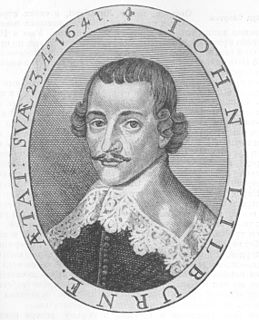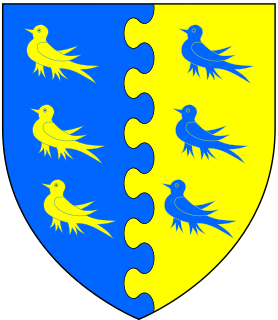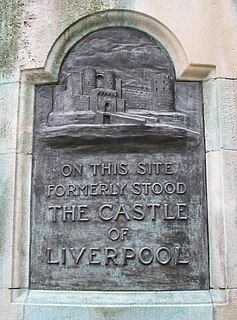
John Lilburne, also known as Freeborn John, was an English political Leveller before, during and after the English Civil Wars 1642–1650. He coined the term "freeborn rights", defining them as rights with which every human being is born, as opposed to rights bestowed by government or human law. In his early life he was a Puritan, though towards the end of his life he became a Quaker. His works have been cited in opinions by the United States Supreme Court.

The New Model Army was a Standing army formed in 1645 by the Parliamentarians during the First English Civil War, then disbanded after the Stuart Restoration in 1660. It differed from other armies employed in the 1638 to 1651 Wars of the Three Kingdoms in that members were liable for service anywhere in the country, rather than being limited to a single area or garrison. To establish a professional officer corps, the army's leaders were prohibited from having seats in either the House of Lords or House of Commons. This was to encourage their separation from the political or religious factions among the Parliamentarians.

General at Sea Robert Blake was an important naval commander of the Commonwealth of England and one of the most famous English admirals of the 17th century. His successes have been considered to have "never been excelled, not even by Nelson" according to one biographer. Blake is recognised as the chief founder of England's naval supremacy, a dominance subsequently inherited by the British Royal Navy into the early 20th century. Despite this, due to deliberate attempts to expunge the Parliamentarians from history following the Restoration, Blake's achievements tend to remain unrecognized.

Colonel Edward Sexby or Saxby was an English Puritan soldier and Leveller in the army of Oliver Cromwell. Later he turned against Cromwell and plotted his assassination.

Charles Howard, 1st Earl of Carlisle was an English military leader and politician who sat in the House of Commons at various times between 1653 and 1660 and was created Earl of Carlisle in 1661.
Colonel John Hewson (Hughson) was a soldier in the New Model Army and signed the death warrant of King Charles I, making him a regicide.
John Desborough (1608–1680) was an English soldier and politician who supported the parliamentary cause during the English Civil War.
Colonel Sir Richard Ingoldsby was an English officer in the New Model Army during the English Civil War and a politician who sat in the House of Commons variously between 1647 and 1685. As a Commissioner (Judge) at the trial of King Charles I, he signed the king's death warrant but was one of the few regicides to be pardoned.
Colonel Philip Jones was a Welsh military leader and politician who sat in the House of Commons between 1650 and 1656. He rose to the rank of Colonel in the service of the Parliamentary Army under Fairfax during the English Civil War. As Governor of Swansea he successfully held the town against the Royalist forces.
William Sydenham (1615–1661) was a Cromwellian soldier; and the eldest brother of Thomas Sydenham. He fought for Parliament and defeated the Royalists in various skirmishes in Dorset. He was member of the various parliaments of the Commonwealth, avowal conservative principles, and defended the liberties of Englishmen. In 1654 made councillor and commissioner of the treasury by Oliver Cromwell. Took the side of the army against Parliament. In 1660, after the Protectorate, and before the Restoration, he was expelled from the Long Parliament. After the Restoration, he was perpetually incapacitated from holding office by the Indemnity and Oblivion Act.

George Fleetwood (1623–1672) was an English major-general and one of the regicides of King Charles I of England.
John Reynolds (1625–1657) was a soldier in the English Civil War and during the Commonwealth. Reynolds may have been a member of the Middle Temple. He joined the parliamentary army, and in 1648 he commanded a regiment of horse. He took part in the Cromwellian conquest of Ireland. He was a member of the Westminster-based Protectorate Parliament for Galway and Mayo in 1654 and Waterford and Tipperary in 1656. He was knighted in 1655. In 1657 he commanded the English force which cooperated with the French in Flanders in the Anglo-Spanish War and was lost at sea when returning to England.
Matthew Thomlinson (1617–1681) was an English soldier who fought for Parliament in the English Civil War. He was a regicide of Charles I. Tomlinson was a colonel of horse (cavalry) in the New Model Army and was one of the officers presenting the remonstrance to parliament in 1647. He took charge of Charles I in 1648, until Charles's execution, but refused to be his judge. He followed Oliver Cromwell to Scotland in 1650.
John Clarke, also known as John Clark, John Clerk, and John Clerke, was an English politician and Justice of the Peace who sat in the House of Commons from 1653 through 1660, and was a colonel in the Parliamentary army between 1651 and 1659.

Thomas Birch was an English landowner, soldier and radical Puritan who fought for Parliament in the Wars of the Three Kingdoms, and sat in the House of Commons at various times between 1649 and 1658.

The rank of general at sea, was the highest position of command in the English Parliamentary Navy, and approximates to the current rank of admiral. Alongside others, the generals at sea were also appointed as Commissioners for the Admiralty and Navy.
John Swinton (1621?–1679) was a Scottish politician active during the Wars of the Three Kingdoms and during the Interregnum. At the Restoration he was found guilty of treason and was imprisoned for some years before being released. In later life he became a Quaker.
Jeremiah Tolhurst was an English tailor, soldier, businessman and politician who sat in the House of Commons at various times between 1654 and 1660. He fought in the Parliamentary army in the English Civil War.
During the Protectorate period (1653–1659) of the Commonwealth of England, the Lord Protector reserved the power previously held by the monarch to confer knighthoods, baronetcies and peerages.








